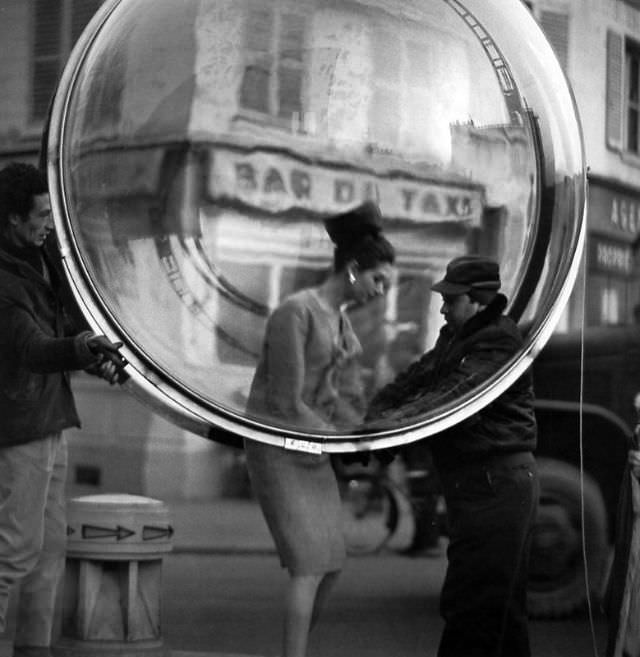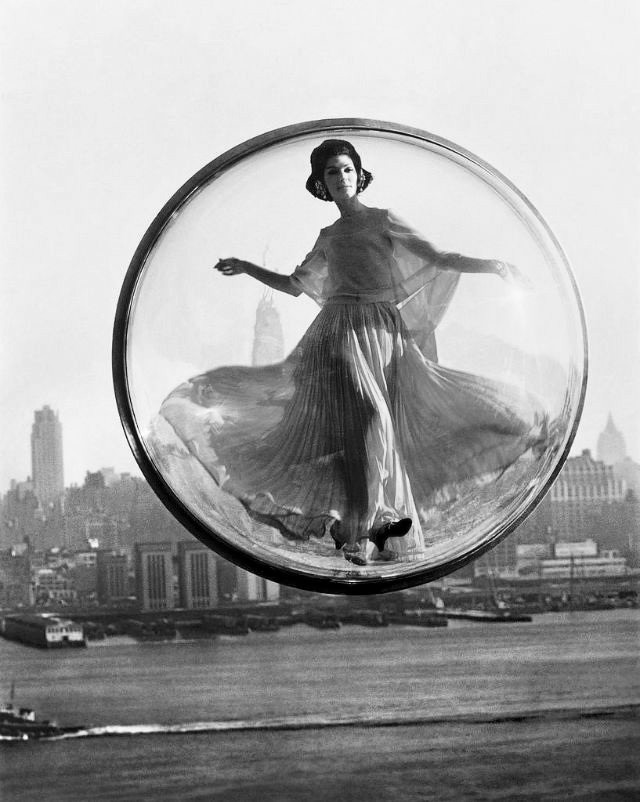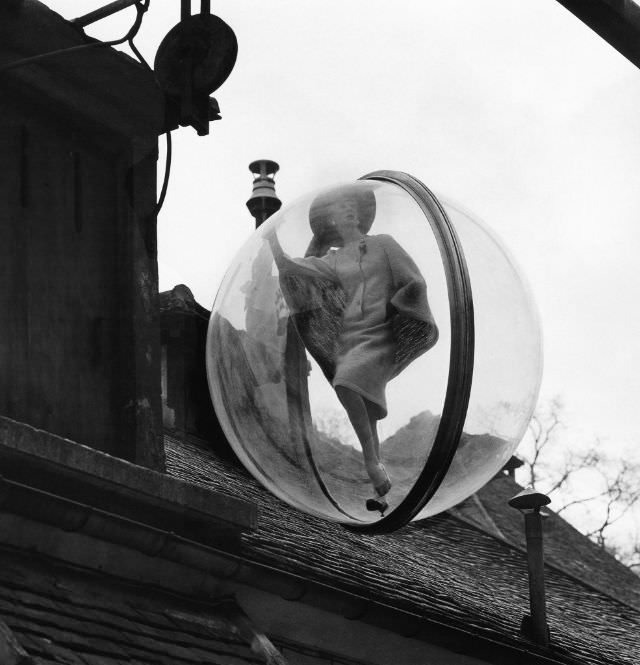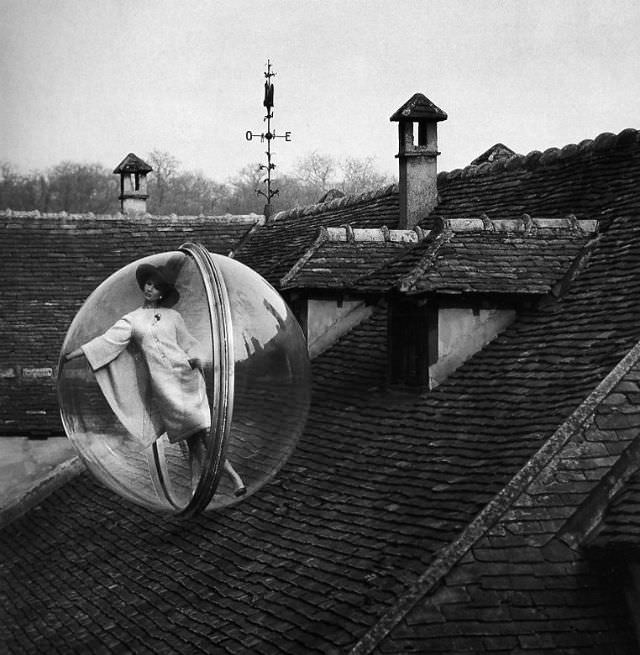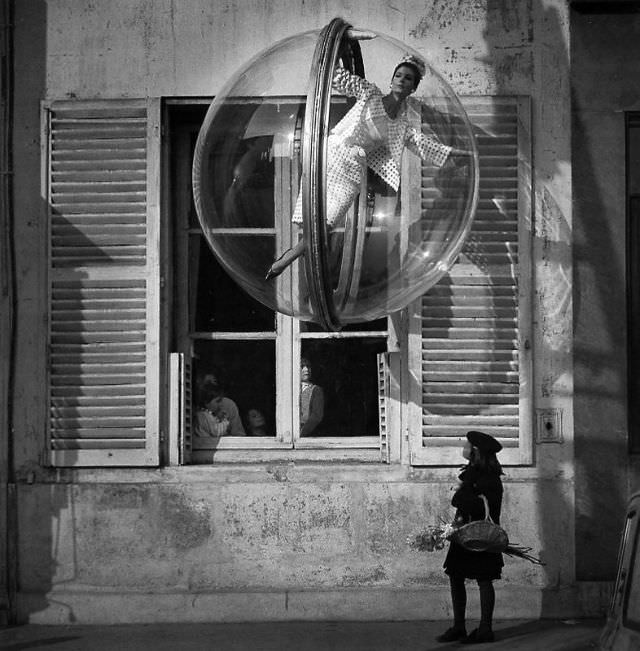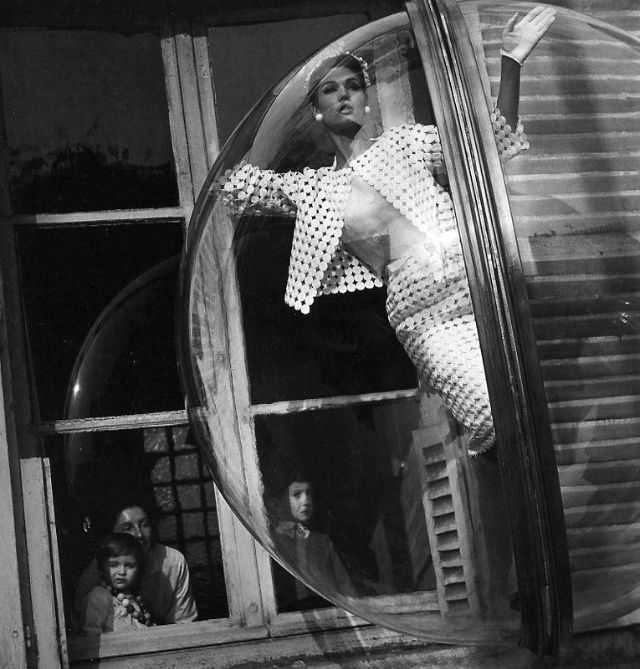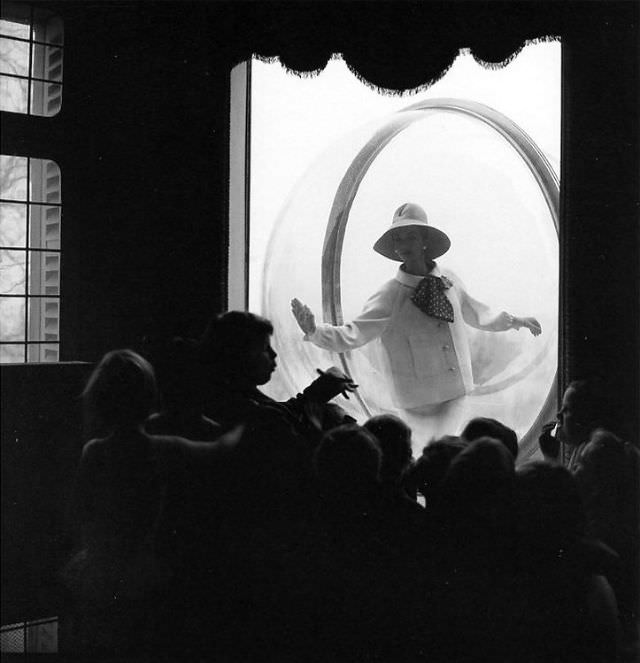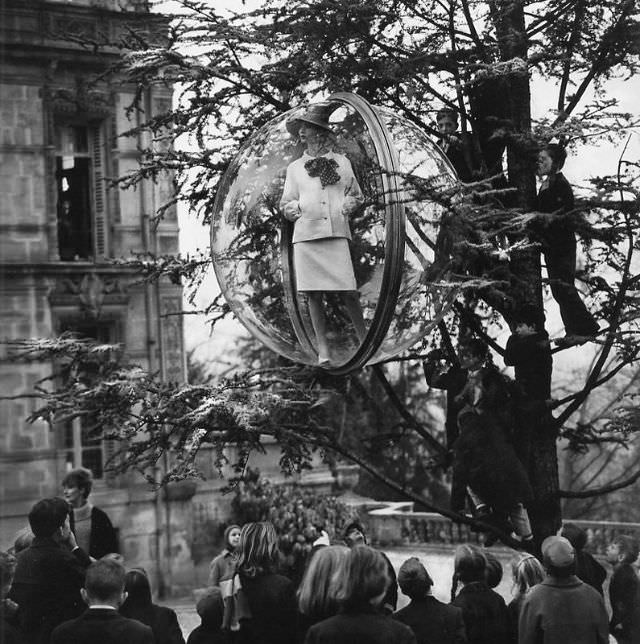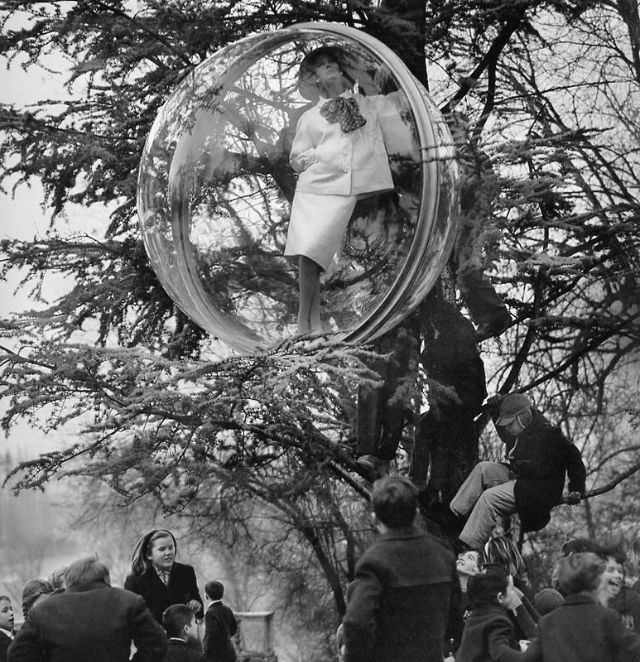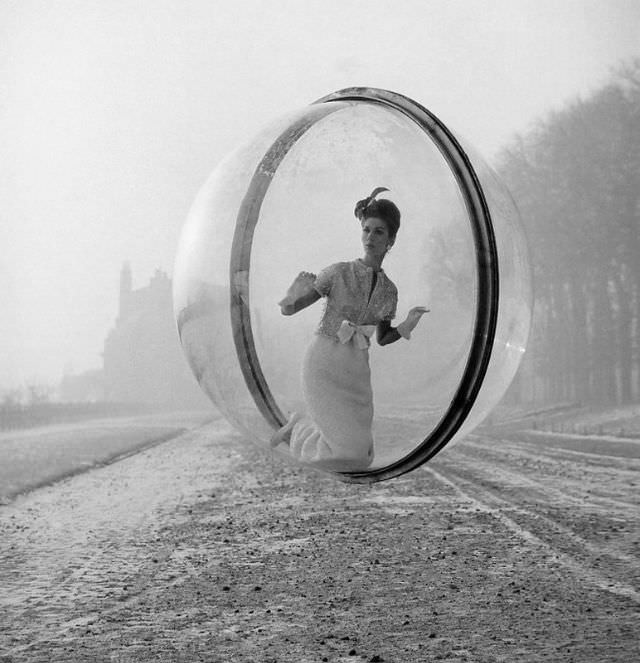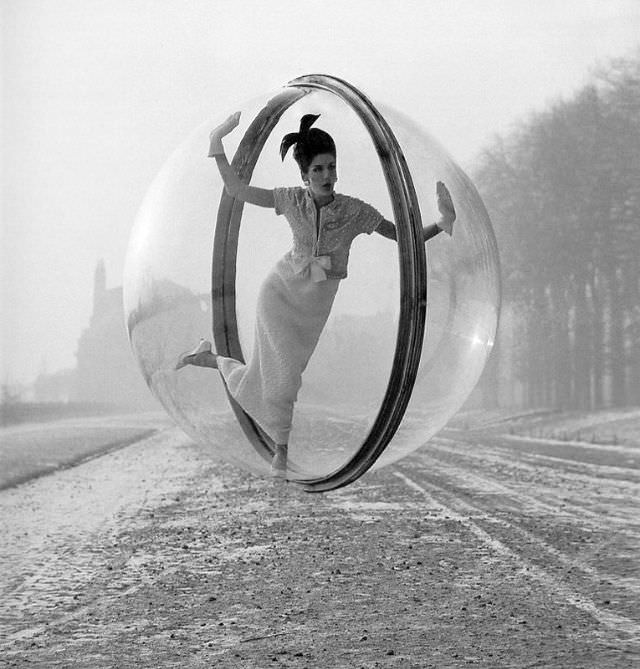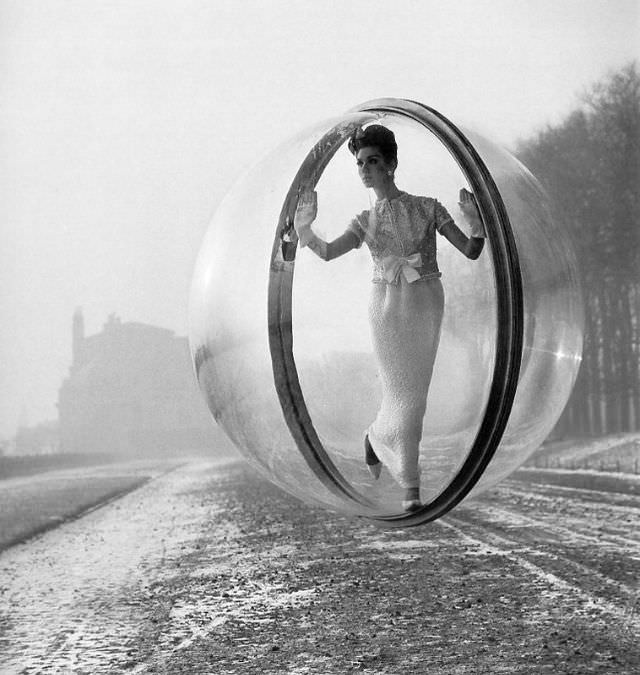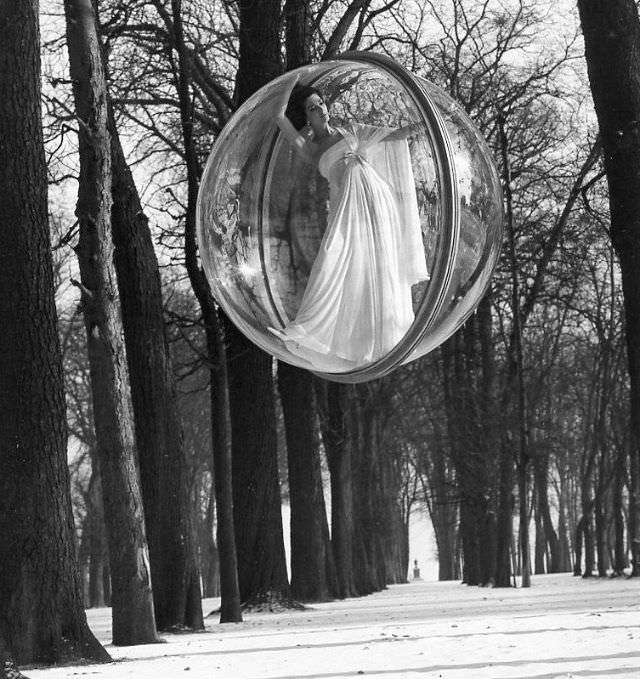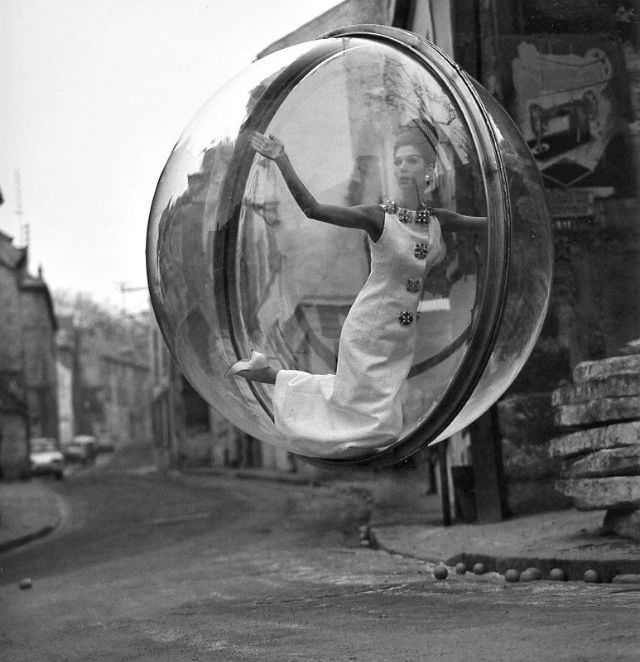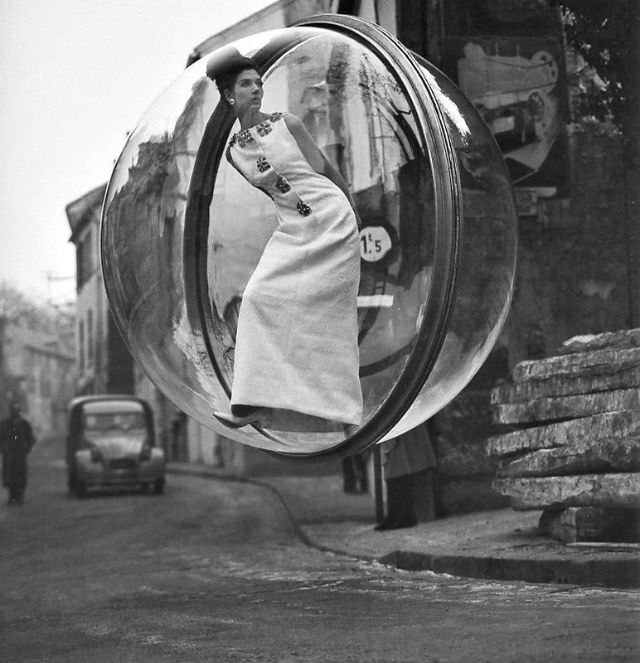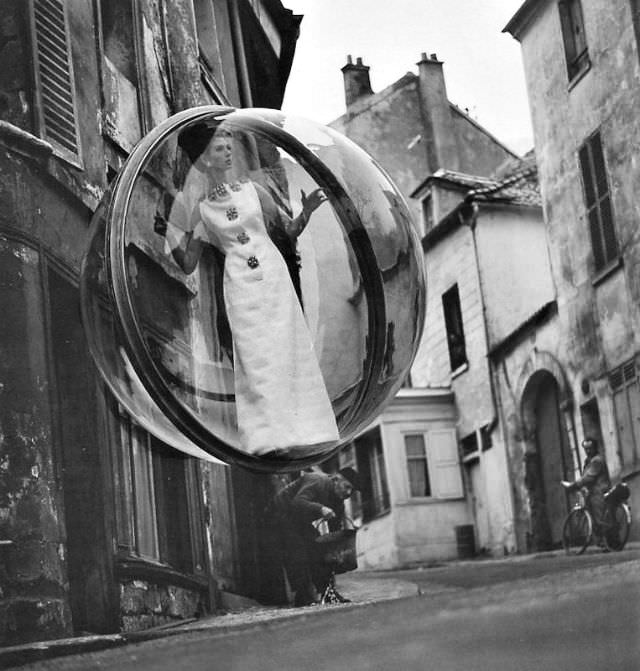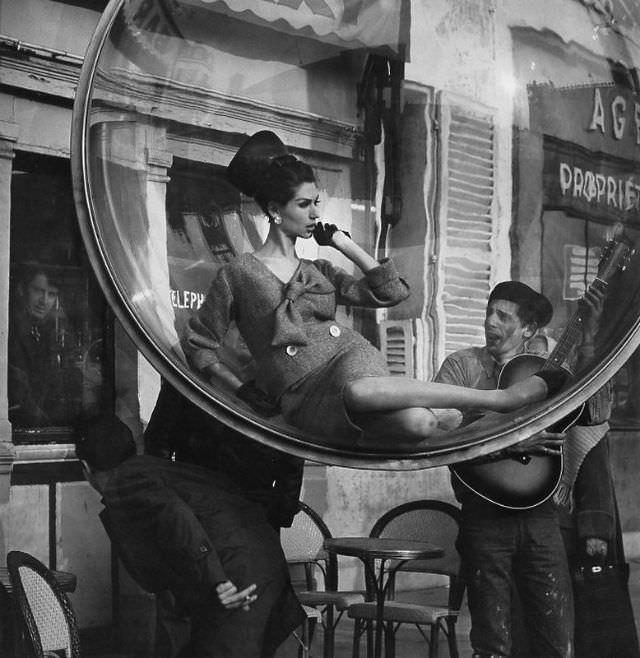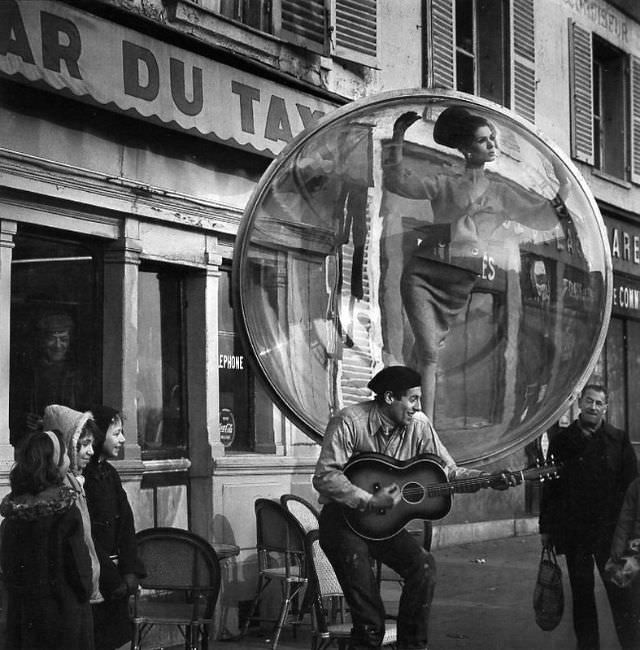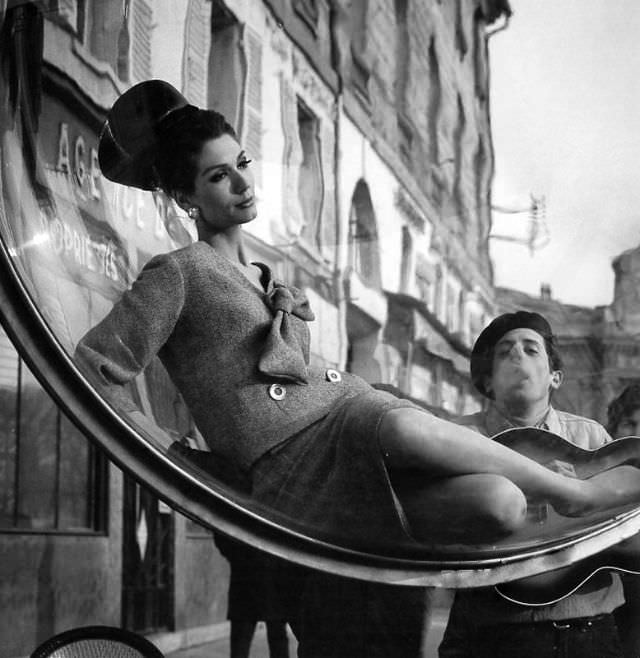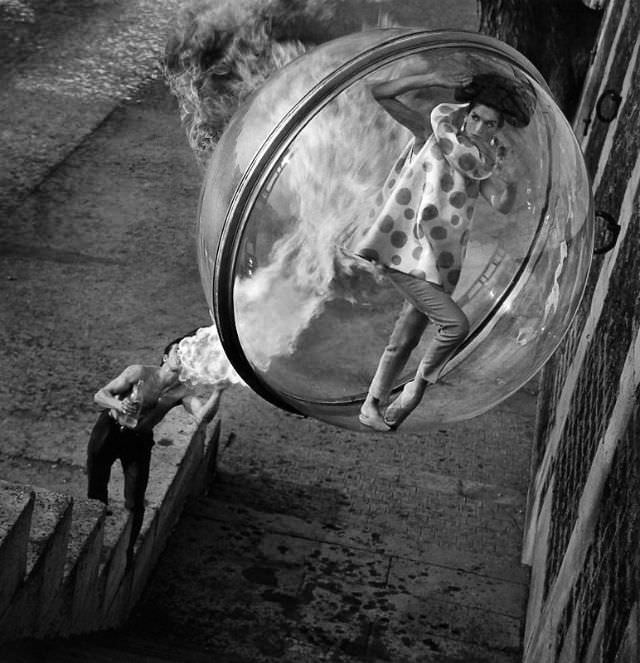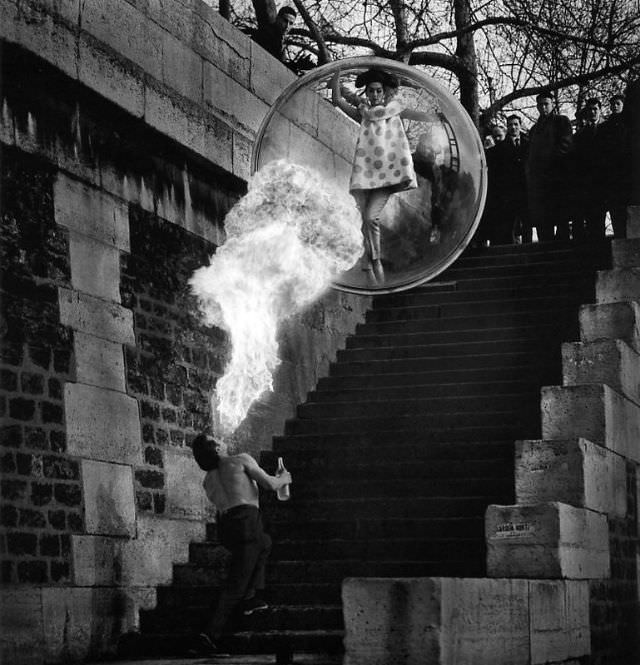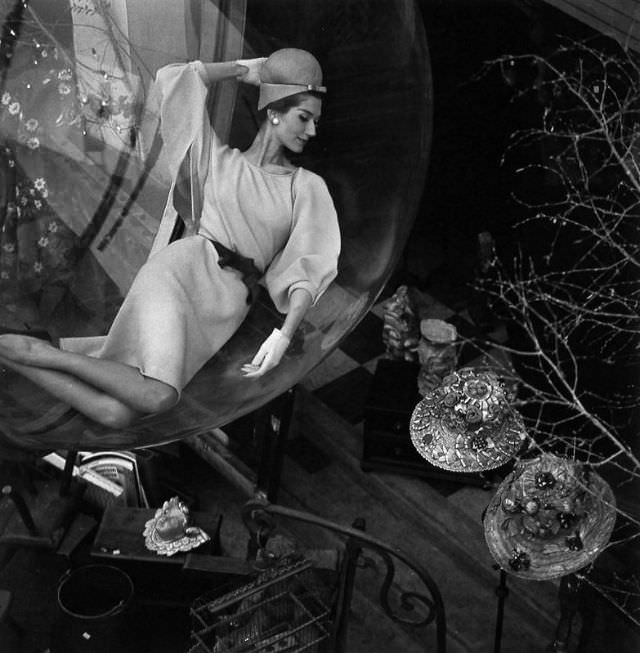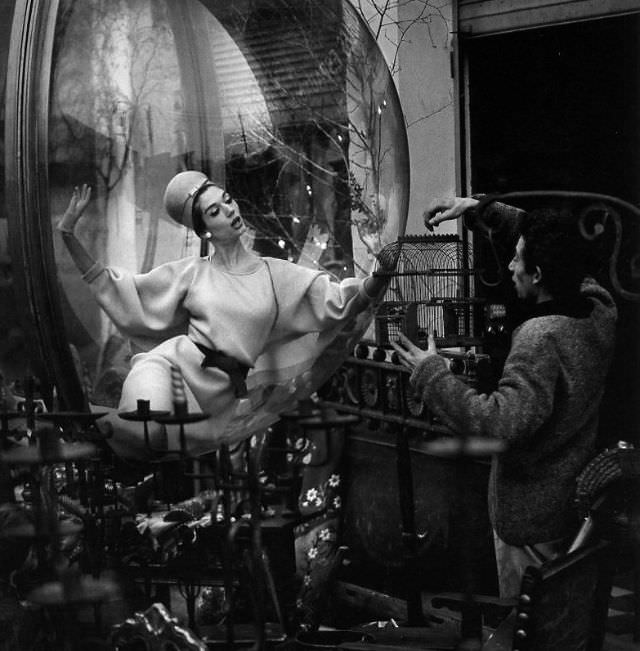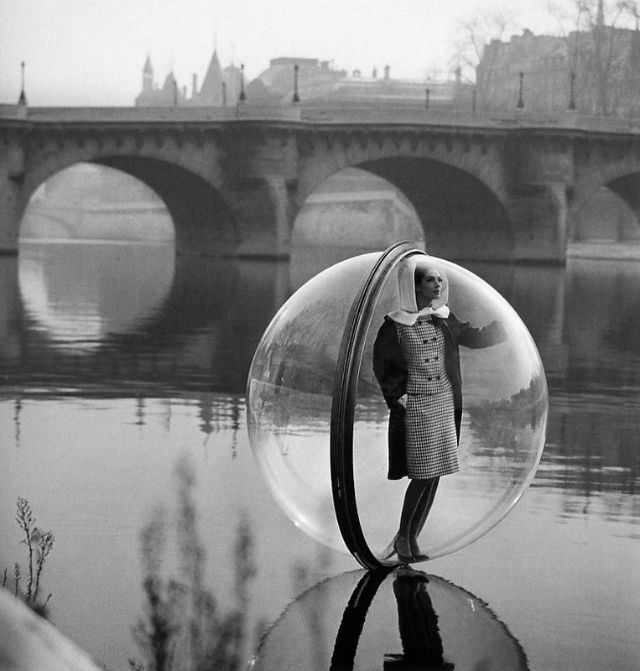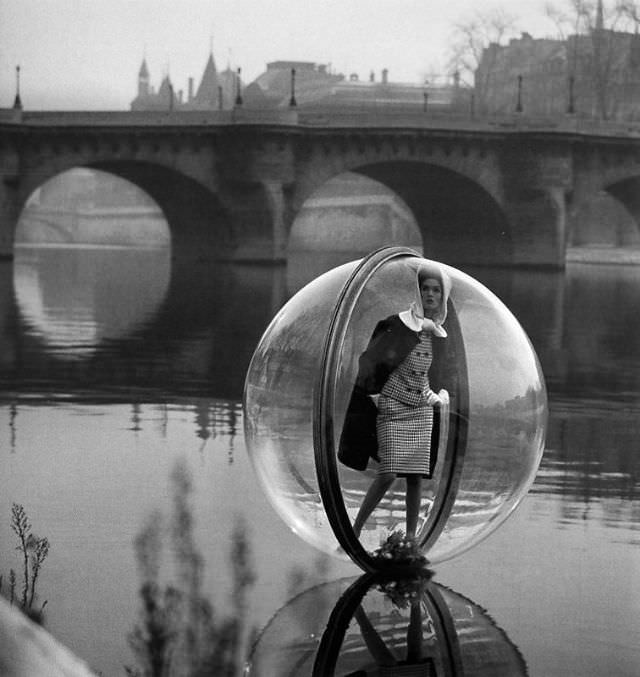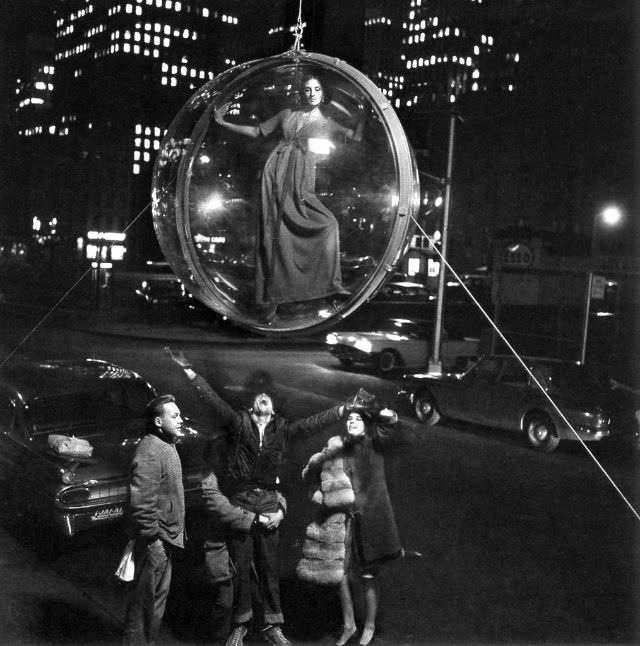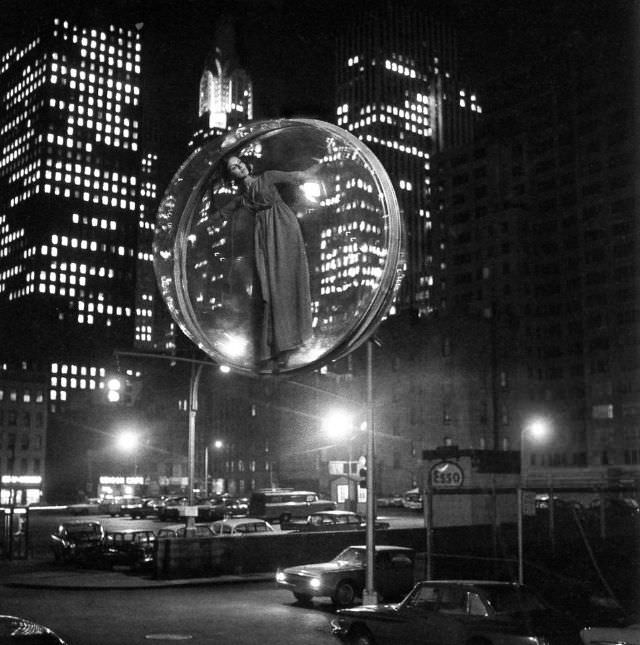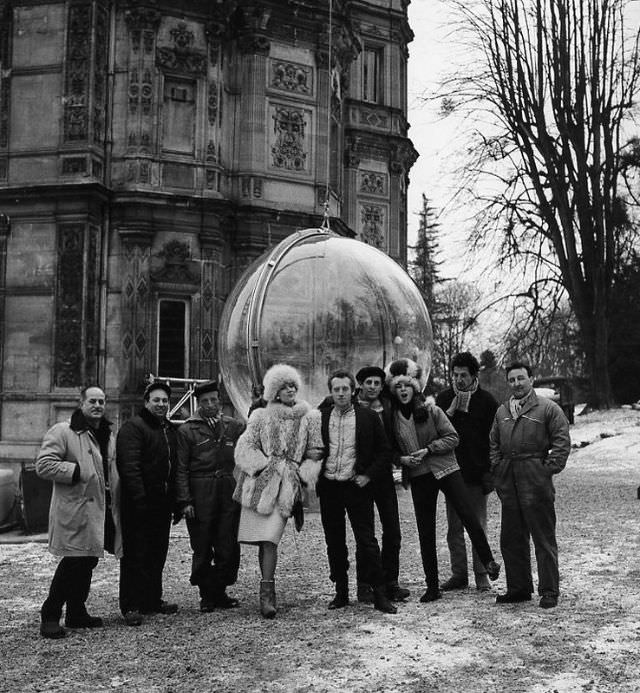In the vibrant era of the 1960s, a revolutionary photographer named Melvin Sokolsky pushed the boundaries of imagination and captured the world’s attention with his iconic “Bubble” series. This magical collection of photographs, dreamt up in 1963, forever changed the landscape of fashion photography with its avant-garde aesthetics and innovative execution.
Creating Dreams Amidst the Parisian Scenery
The premise was as simple as it was audacious. Sokolsky envisioned fashion models enclosed within giant clear plastic bubbles, suspended mid-air above the beautiful River Seine in Paris. The dreamlike images challenged reality and added an ethereal quality to fashion photography that was hitherto unseen.
The bubbles, made from Plastiview, consisted of two hemispheres with a slim 1/8-inch crack allowing the models to breathe. These were suspended from an incredibly thin yet robust cable, capable of supporting the weight of a Cadillac. This setup allowed Sokolsky and his subject to create stunning, uninterrupted images, free from the usual distractions of hair and makeup adjustments.
The Intersection of Art and Fashion
The “Bubble” series was a true fusion of fashion and art. The transparent bubble, both isolating and highlighting the model, added a futuristic twist to the traditional fashion shoot. It created a surreal tableau that emphasized the outfits as well as the models’ grace and poise within the constraints of the bubble.
Sokolsky’s imaginative approach and bold vision resonated with the style and energy of the ’60s, reflecting a period that was challenging norms and breaking boundaries across various sectors, including fashion.
More Than Just Fashion Photography
While Melvin Sokolsky’s name is synonymous with avant-garde fashion photography, his repertoire was not limited to this field. In fact, three-quarters of his print work has been for advertising, a realm that rarely gives credit to the photographer. From the late ’60s, Sokolsky expanded his creative pursuits and ventured into directing commercials and working behind the camera, bringing his unique visual style to a wider audience.


